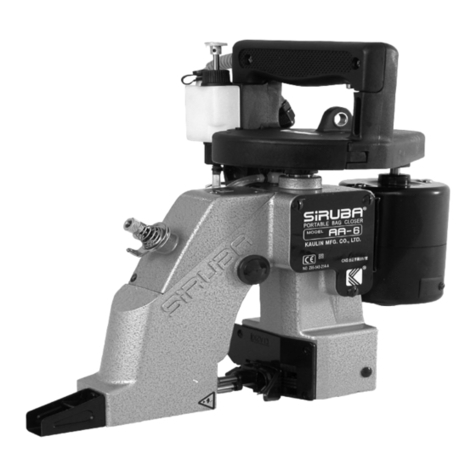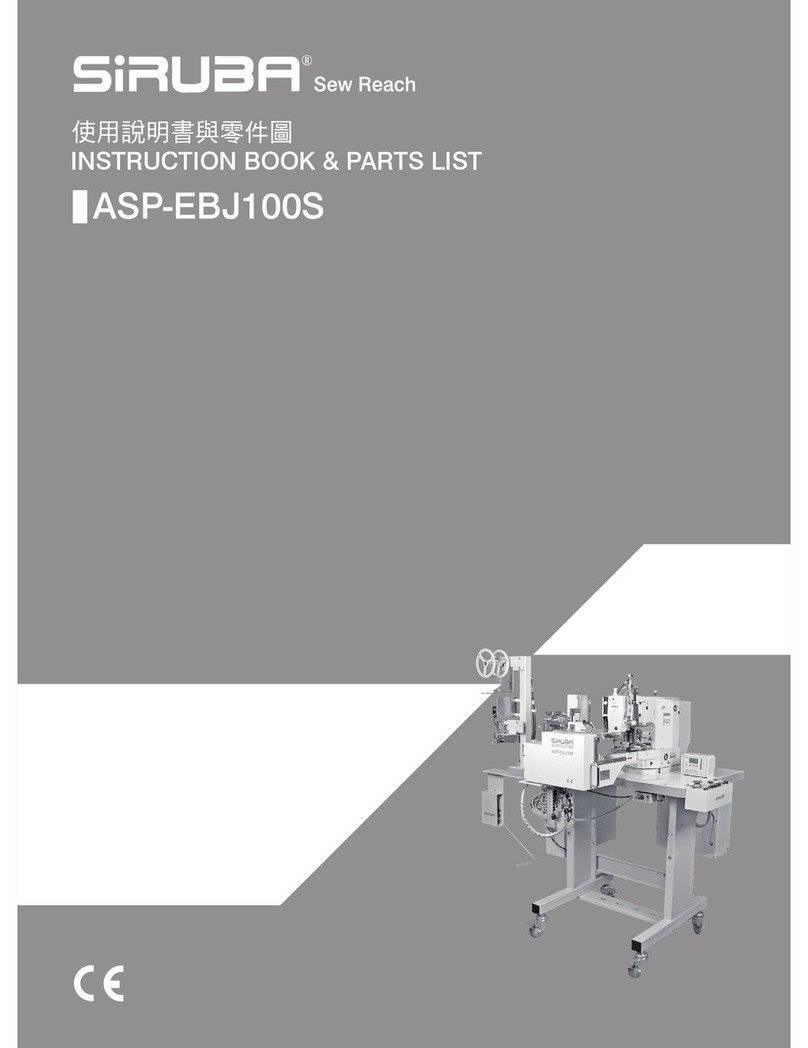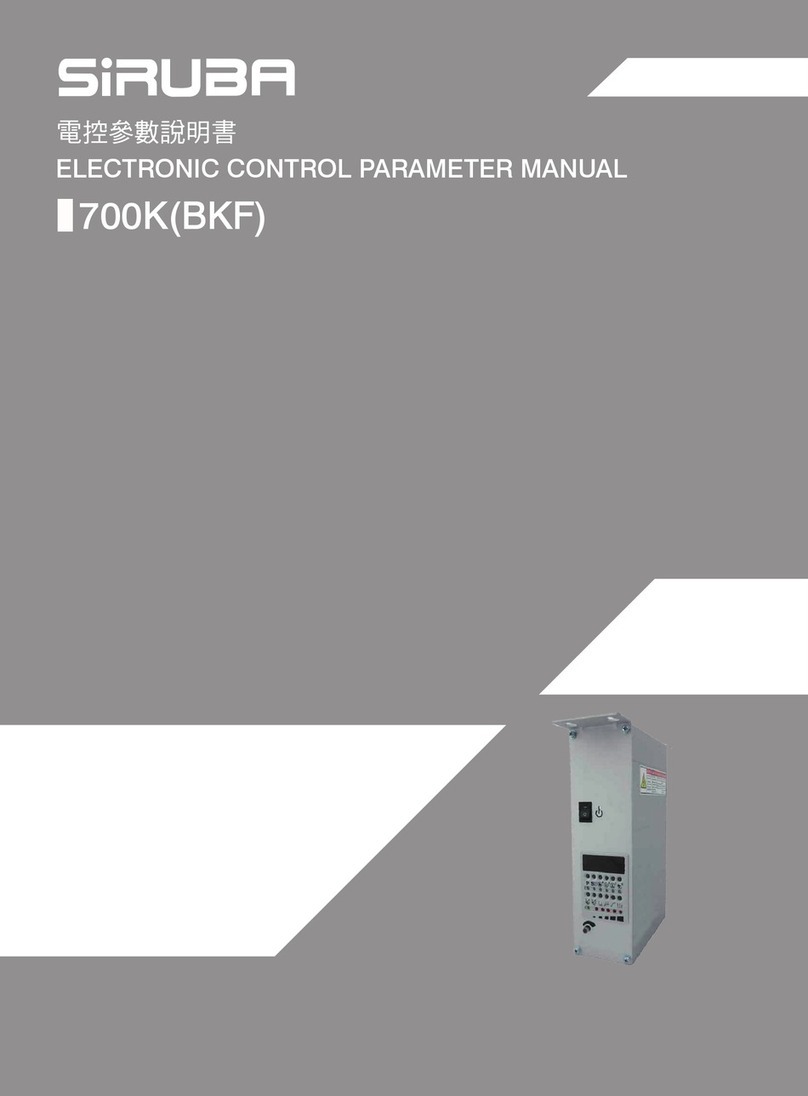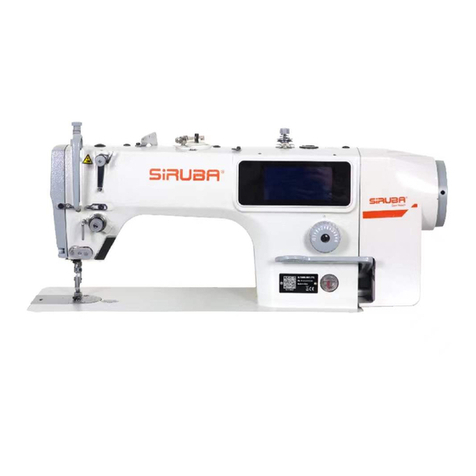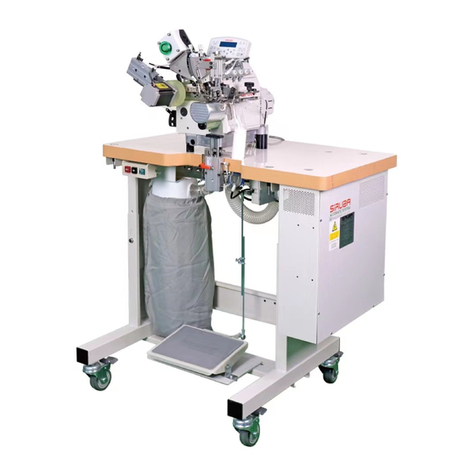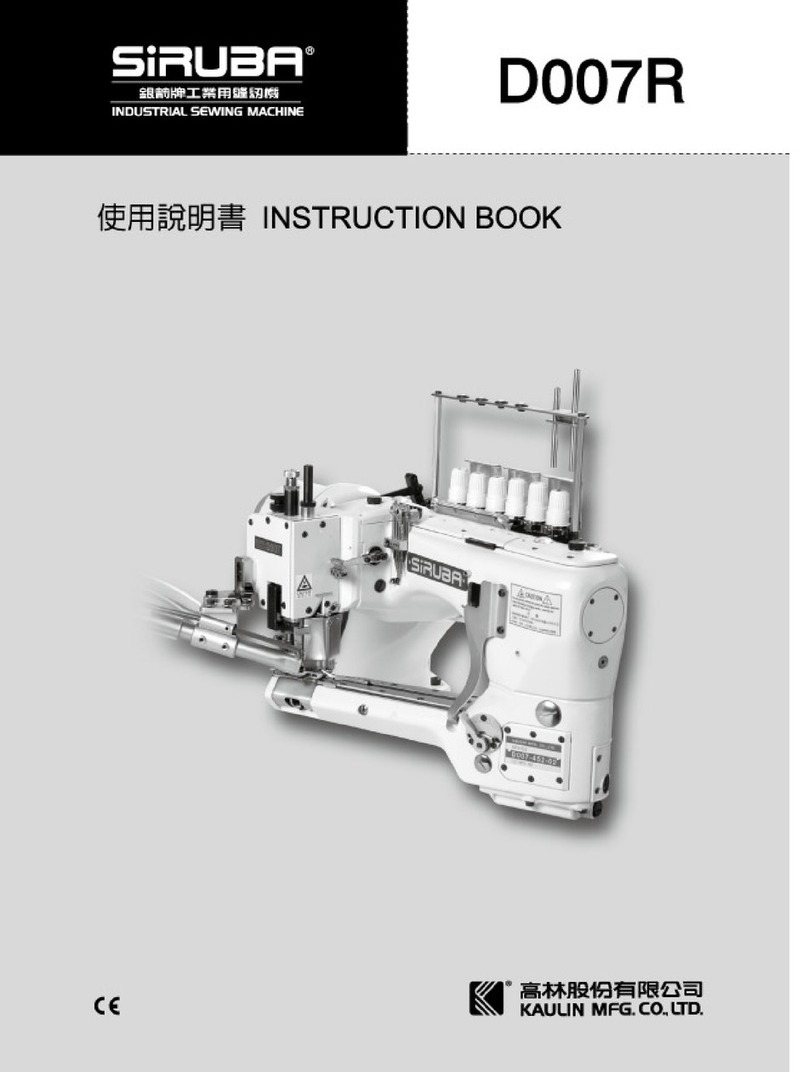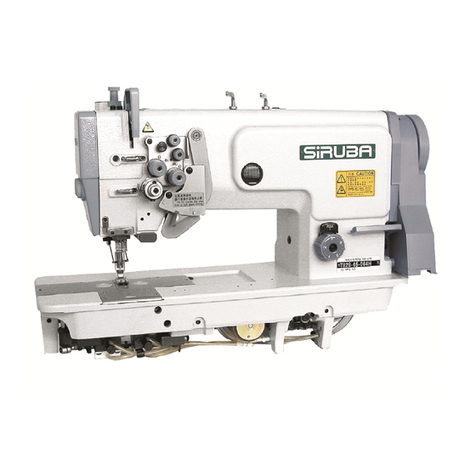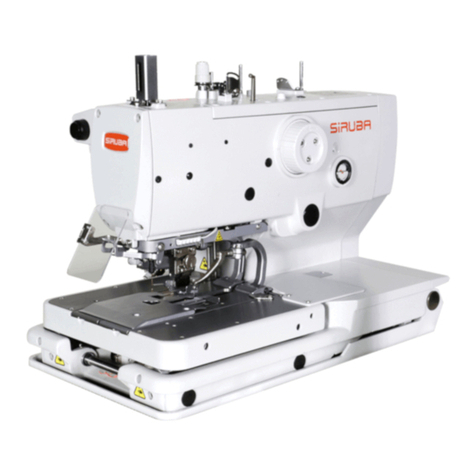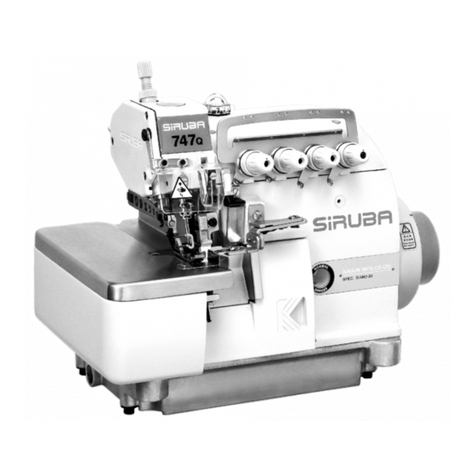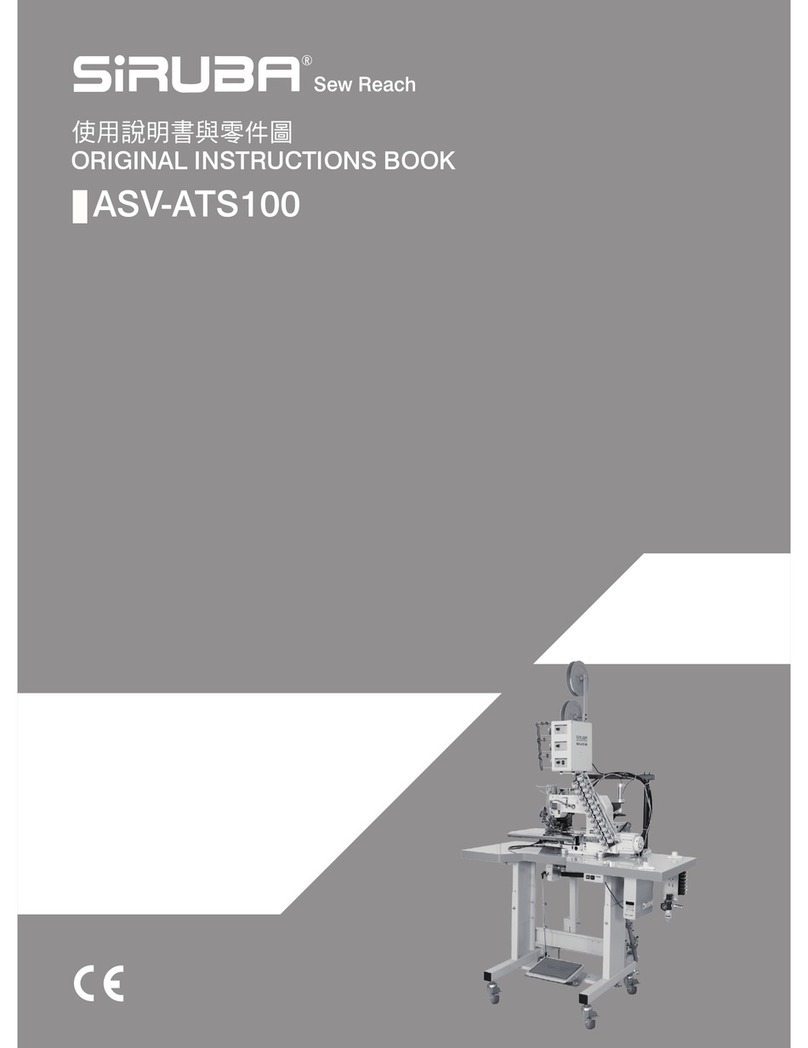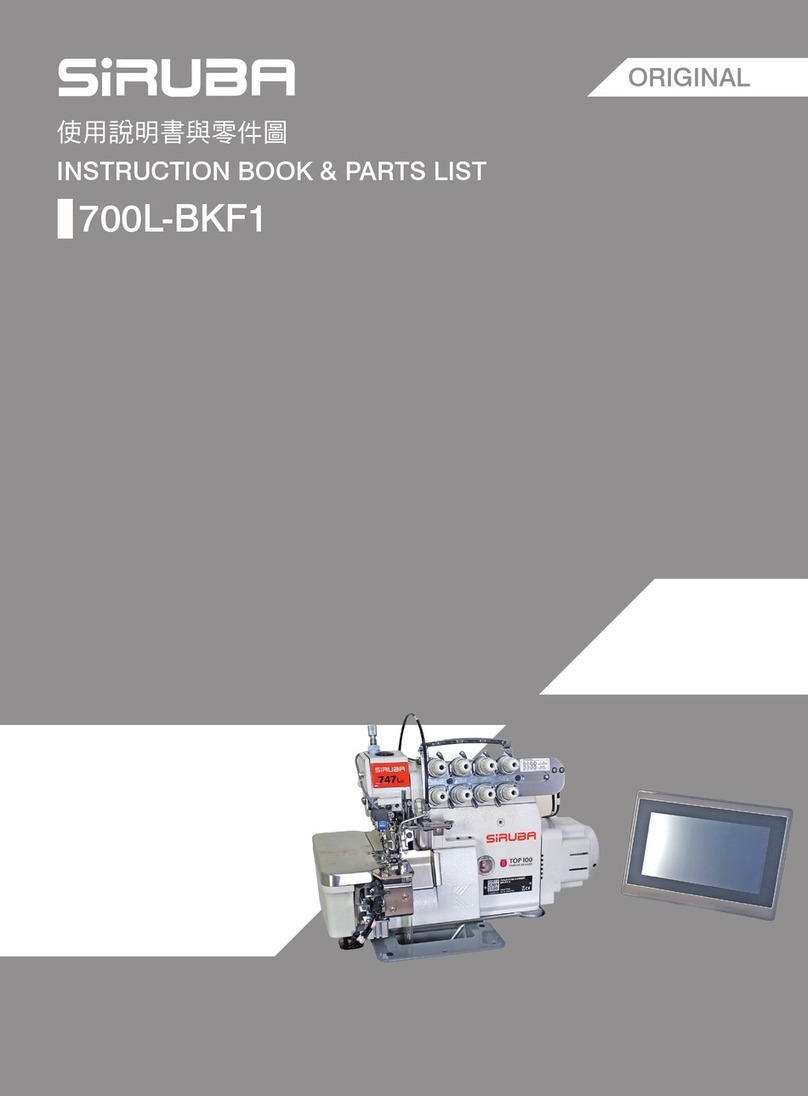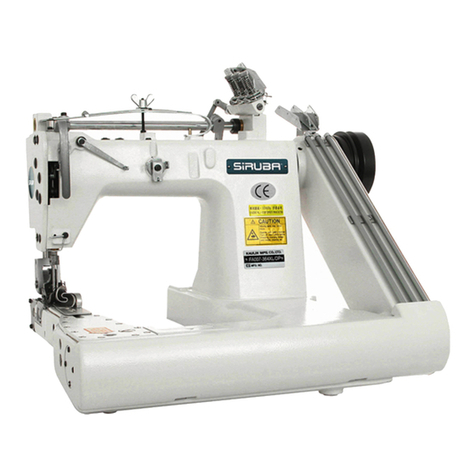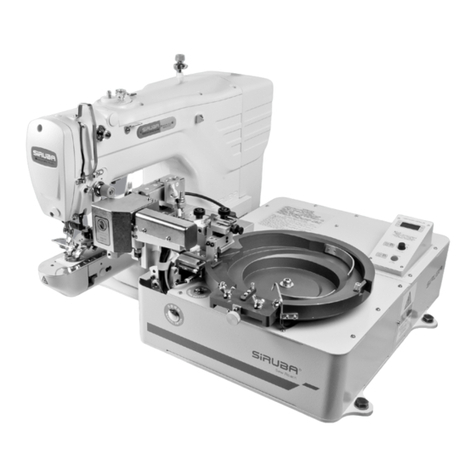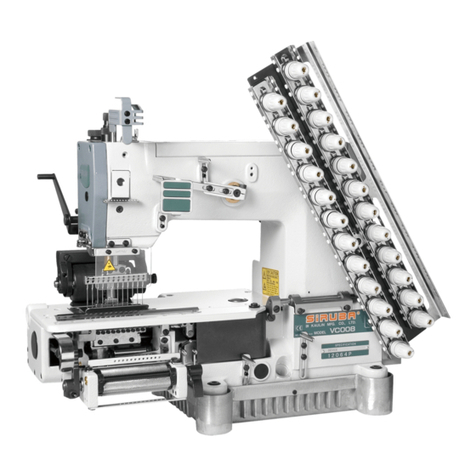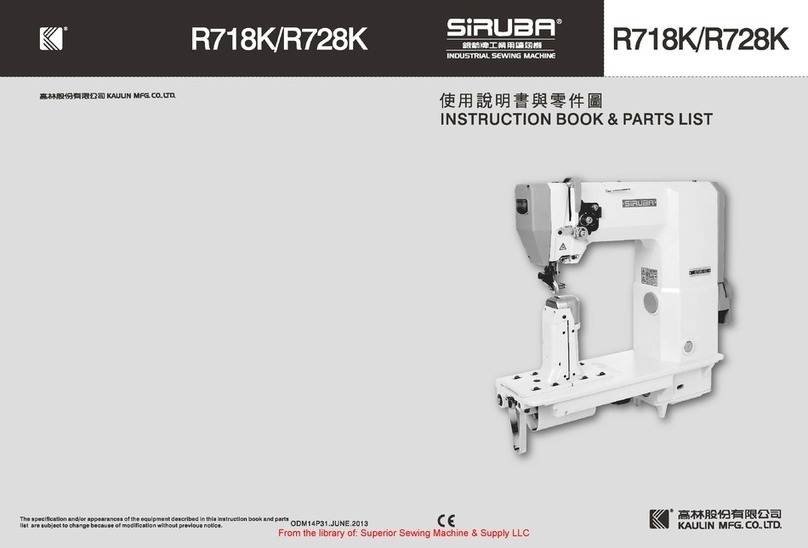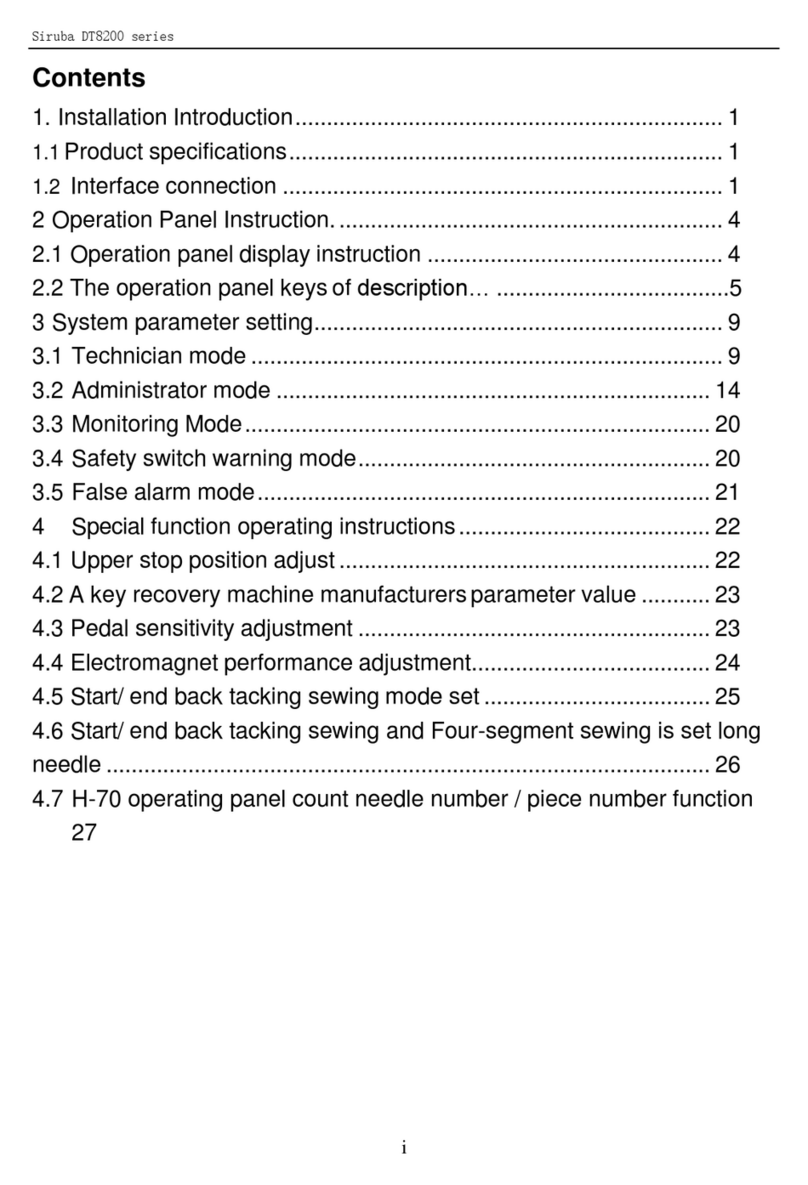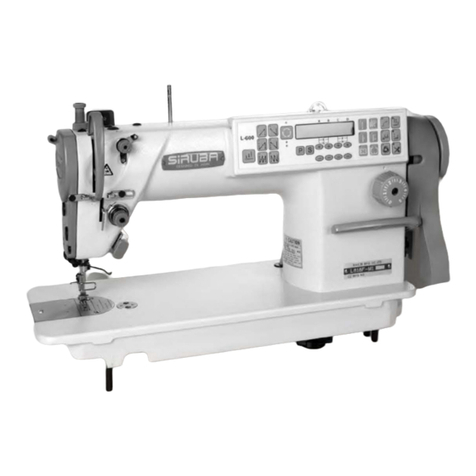- 1 -
Safety instructions
Like any other electrical device, a overlock machine
can cause serious, even life-threatening injuries.To
avoid this, and in order to work safely:
• Before initial use of your overlock machine, read
these operating instructions thoroughly.
• Keep the operating instructions in a suitable place
near the machine. When passing the appliance
on to others, always enclose the operating
instructions.
• Always disconnect the power supply when leaving
the machine unattended. This will prevent the risk
of accidents if the machine is switched on
accidentally.
• First pull the power plug before changing the bulb
or performing maintenance work on the machine.
This will prevent possibly life-threatening electric
shocks.
• Do not remove the plug from the socket by pulling
on the cable. Always grip the plug and not the
cable when pulling out the power plug.
• Only use the overlock machine in dry rooms.
Don’t use the machine in wet condition and
location.
• In case of any visible damage on the machine, the
foot switch or the power cable: Have the damage
repaired by Customer Service before using the
overlock machine again.
• Never let children or elderly persons handle the
machine unsupervised because they may not
properly appreciate the possible dangers. Keep
electrical appliances outside the reach of children.
• Never use the machine when the ventilation
apertures are blocked. Keep the ventilation
apertures of the machine and the foot switch free
from fluff, dust and waste material.
• Don’t let children play with sewing machine.
• Never use the machines if the air went are
blocked keep the air wends free form dust, fusel
and leftovers.
• Never place anything on the foot controller.
• This appliance is not intended for use by persons
(including children) with reduced physical,
sensory or mental capabilities, or lack of
experience and knowledge, unless they have
been given supervision or instruction concerning
use of the appliance by a person responsible for
their safety.
• Children should be supervised to ensure that they
do not play with the appliance.
Warning
against injuries and
material damages:
According to legislation, you as the user of an
electrical appliance are responsible for preventing
possible accidents through safety-conscious
behaviour:
• Keep your work space tidy.An untidy workplace can
lead to accidents.
• Provide adequate lightingwhen working!
• Do not wear loose clothing or jewellery,as these can
be caught in the moving parts. You should also
wear a hair net if you have long hair.
• Avoid abnormal posture. Remain steady and in a
well-balanced position at all times.
• Be alert! Pay attention to what you are doing.
Always take a rational approach to your work.
Never work with the overlock machine if you are
unable to concentrate or if you are feeling unwell!
If accidents occur as a result of handling the machine
with insufficient care, or failure to follow the safety
instructions in this manual, then the manufacturer
cannot accept liability.
Please use for your overlock machine the ZHEJIANG
FOUNDER presser foot, type KD-2902.
Power rating: 220 - 240V ~ , 50Hz
Current rating: 1.0A
Protection Class : II
The sound pressure level under normal operating
conditions is 80dB (A).
If the supply cord that fixed with foot controller is
damaged, it must be replaced by the manufacturer or
its service agent or a similar qualified person in order
to avoid a hazard.
Do not dispose of electrical appliances as unsorted
municipal waste, use separate collection facilities.
Contact your local government for information
regarding the collection systems available.
If electrical appliances are disposed of in landfills or
dumps, hazardous substances can leak into the
groundwater and get into the food chain, damaging
your health and well-being.
When replacing old appliances with new once,
the retailer is legally obligated to take back
your old appliance for disposal at least for
free of charge.
